Products You May Like
Build strong, muscular shoulders with these best shoulder press variations from strength and physique coach Shane O’Sullivan…
Strong shoulders are essential improving muscular size and strength across your entire upper body, with wide shoulders key to unlocking that ‘V-shaped’ torso.
The main shoulder muscles, the deltoids, are made up three parts: one at the front of the joint, one at the side and one at the back. Inside the joint is a group of four small but crucial stabilising muscles called the rotator cuff.
Related: 3 Best rotator cuff exercises
Weak shoulders will, at best, limit the amount of weight you can manage for every upper-body exercise; at worst you’ll end up injured.
Best shoulder press variations
The shoulder press is the undisputed king of all shoulder exercises, because it directly engages every shoulder muscle and allows you to life the most load for maximum strength and muscle progression. It’s also easily scalable for both beginners and more seasoned lifters.
Related: 3 Best Deadlift Variations
These are the best shoulder press variations to consider the next time upper-body day rolls around – as demonstrated by Shane O’Sullivan, founder of Hybrid Physique Coaching…
RELATED CONTENT:
- Best Dumbbell Exercises For Back Workout
- Try This Dumbbell-Only Leg Workout
- Best Dumbbells For Home Workouts
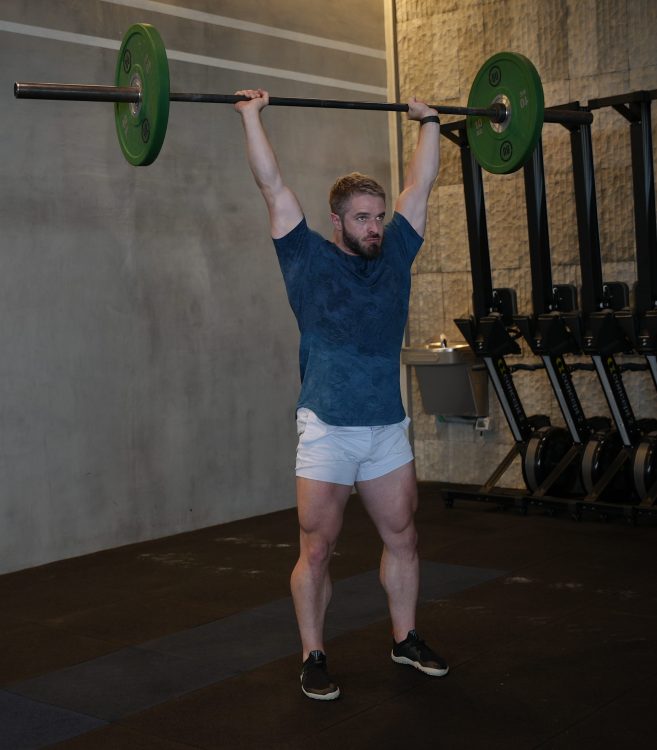
1. Barbell Press
The strict barbell press is a foundational compound movement. It’s excellent for building upper-body strength and stability. It also offers other key benefits, such as improving core strength, building shoulder muscle mass and improving power output for athletes.
How to do a barbell press:
- With the bar racked at shoulder height in front of you, place your hands just outside shoulder-width apart.
- Keep elbows and forearms in a vertical position – if your elbows are tucked or flared, your grip is either too narrow or too wide. Adjust accordingly.
- Position the barbell in the heel of your palm, as this is where most force is generated from. Make sure your middle knuckles face upwards (towards the ceiling).
- From here, keep your heels screwed into the floor and core braced, then press the bar directly overhead, bringing your head under the bar with elbows locked out.
- Lower the bar back down to rest it across your chest, then repeat.
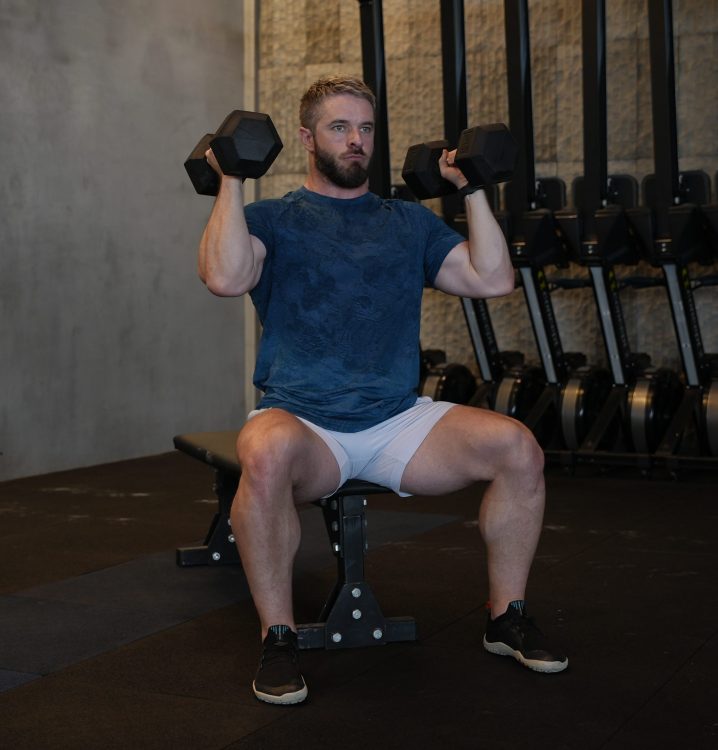
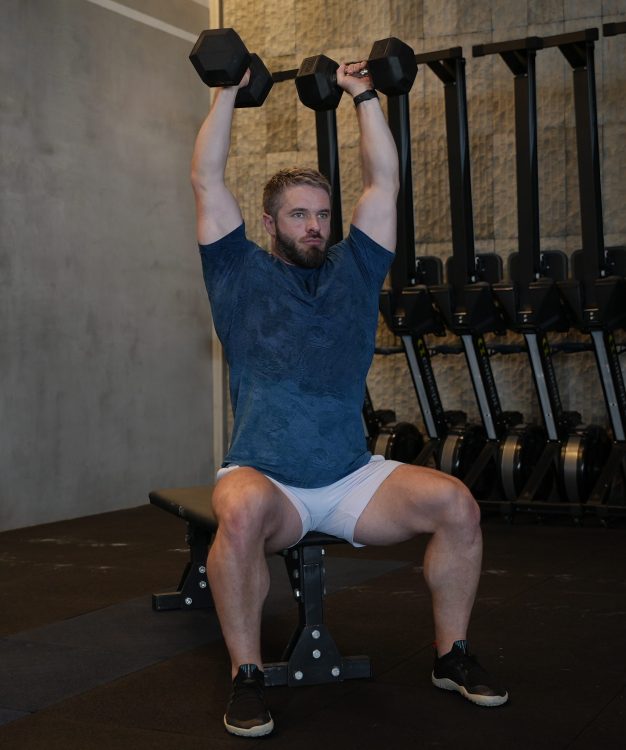
2. Seated Dumbbell Shoulder Press (No Back Support)
The seated shoulder presses is a better option for hypertrophy, because it really isolates the shoulders. It’s a fantastic exercise for building abdominal strength, too – particularly if you don’t rely on a back support – as you need to have greater abdominal strength to stabilise your torso as you lift heavier loads.
How to do a seated dumbbell shoulder press:
- Sit on a bench, with your feet just wider than shoulder-width apart.
- Bring your dumbbells to your shoulders, with your palms facing each other (neutral grip) – a neutral grip puts less stress on the shoulders.
- Bracing your core, press the dumbbells overhead.
- As you lock out, keep your biceps close to your ears but avoid banging the dumbbells together.
- Also avoid arching your back.
- Slowly lower the dumbbells with control back to your shoulders, take a deep breath, then repeat.
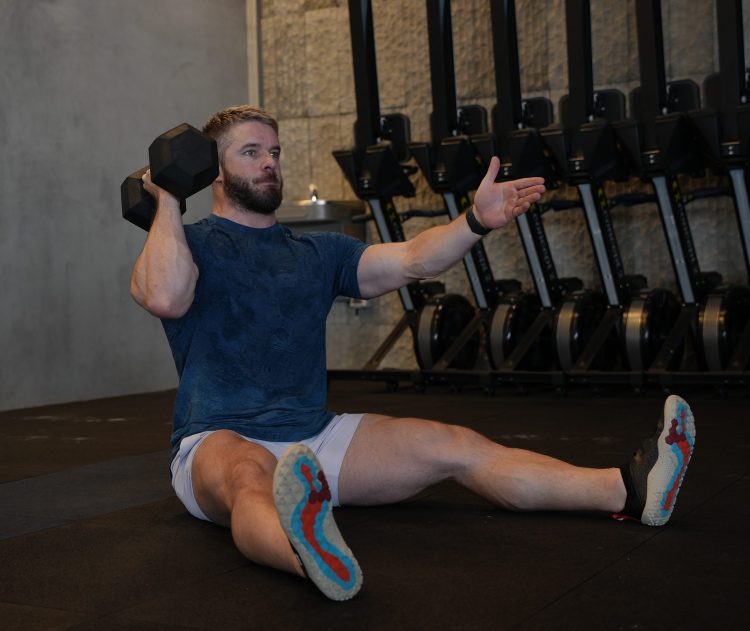
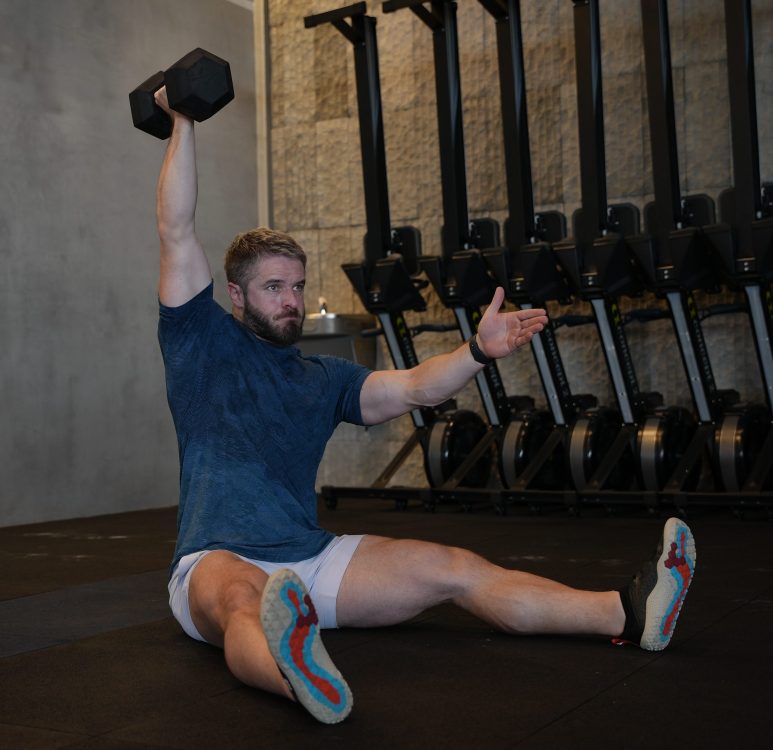
3. Dumbbell Floor Z Press
The dumbbell floor Z press builds strength, enhances pressing stability and performance in sports like weightlifting, powerlifting and strongman. Additionally, it is a great exercise to reinforce proper scapular control and tension, to aid in injury prevention of the shoulders during most pressing movements.
How to do a dumbbell floor Z press:
- First, create a strong base to press from the floor: sitting with straight legs, an upright torso and heels grounded into the floor.
- Keep your upper back tight, with the lats creating a strong shelf to press from.
- Fully brace your core, keep your spine as rigid as possible and compress your ribcage downwards.
- Press the dumbbells overhead.
- Once locked out overhead, bring the dumbbells down under control, and keep your core upright through the full range of motion.
- If you find yourself losing balance on the descent, slow down your tempo.